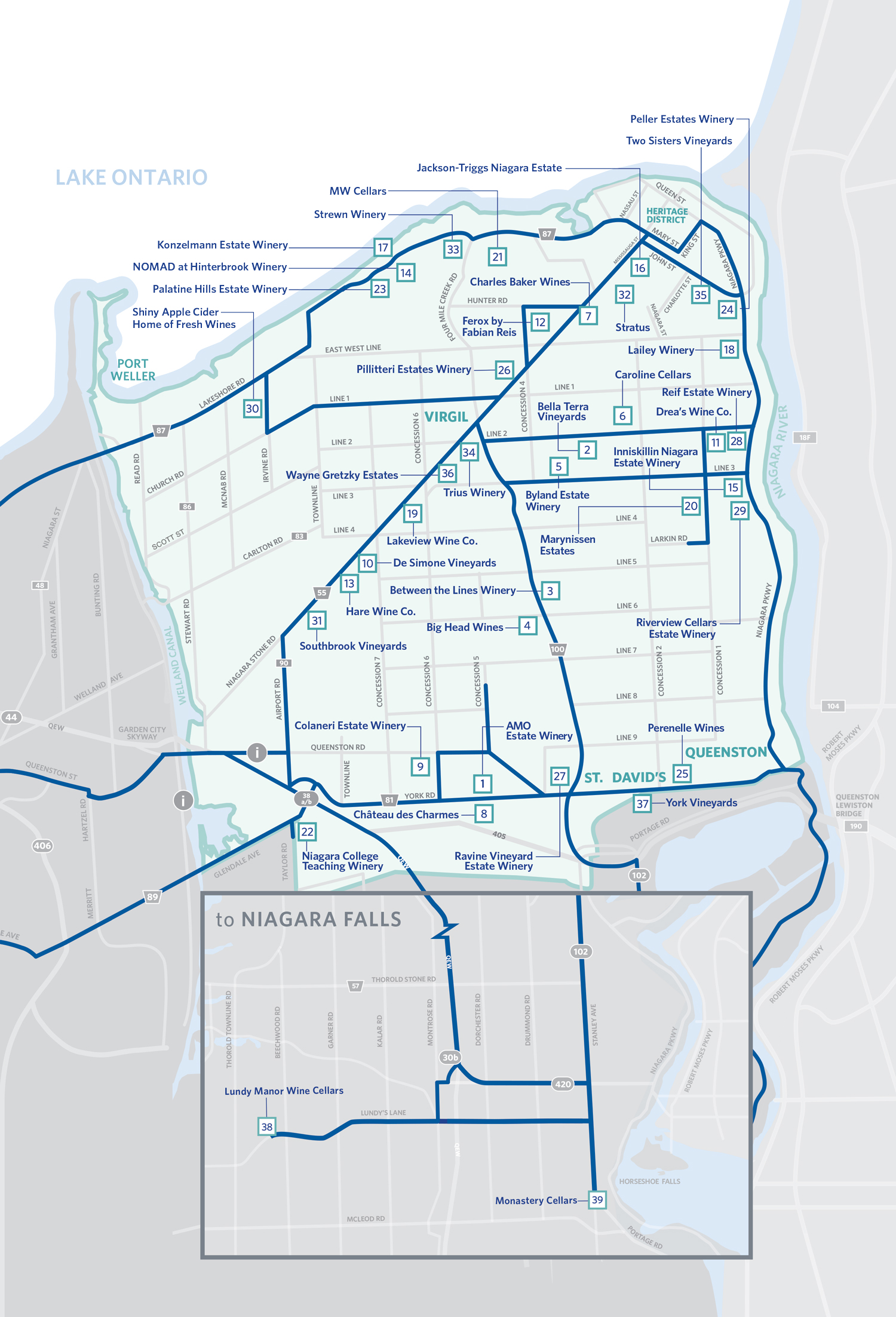Climate
The geographical attributes of Niagara-on-the-Lake have a meaningful impact on climate. Proximity to the deep waters of Lake Ontario and the fast-flowing Niagara River moderates temperatures throughout the viticultural region, reducing the risk of late spring and early fall frosts. Vineyards farther from the lake receive somewhat less of the lake’s moderating effects and thus experience a higher daily temperature range, with warm days and cool nights. Closer to the sheltering effects of the Niagara Escarpment spring warming occurs earlier, with sun exposure on east- and south-facing slopes promoting bud-burst and bloom.
Topography
Most of this region is lakeshore plains land, characterized by long, gentle slopes that become slightly more prominent in proximity to the north-facing Lake Iroquois Bluff. The gentle topography allows the entire region to enjoy generous sunlight exposure from early morning to late evening, which provides heat accumulation during the day and throughout the season, promoting an early start to the growing season. Clear, calm conditions often result in high daily temperature ranges and excellent growing conditions for grapes.
Soil
Ranging from sandy loam soils to soils primarily consisting of red shale with a high silt and clay content, water-holding capacities vary greatly within this region. Because of the gradual sloping of the landscape toward the lake, these soils tend to be moderately to well-drained with slow surface runoff.
Download the map for a look at all the wineries in Niagara-on-the-Lake & Area.
